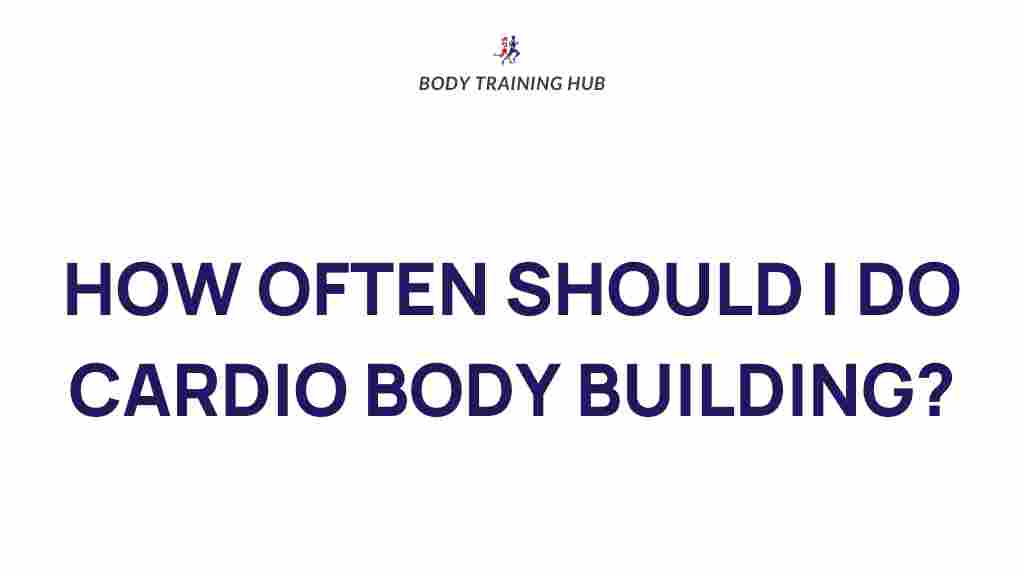Unveiling the Science Behind Cardio Frequency
When it comes to achieving optimal fitness and maintaining good health, understanding the concept of cardio frequency is essential. Many individuals dive into exercise routines without fully grasping how the frequency of their cardiovascular workouts impacts their overall results. This article aims to unveil the science behind cardio frequency, providing you with insights on how to structure your training regimen effectively.
What is Cardio Frequency?
Cardio frequency refers to how often you engage in cardiovascular exercises within a specific time frame. This can include activities like running, cycling, swimming, and even brisk walking. The frequency of your workouts plays a crucial role in how your body responds to exercise, including factors such as:
- Endurance improvement
- Fat loss
- Heart health
- Overall fitness levels
The Importance of Cardio Frequency
Understanding the importance of cardio frequency can help you tailor your training plan to meet your fitness goals efficiently. Here are some key reasons why frequency matters:
- Consistency: Regular exercise promotes habit formation and long-term success.
- Adaptation: Your body adapts to the demands placed on it, and frequent cardiovascular activity can lead to improved performance.
- Recovery: Balancing cardio frequency with recovery is vital to prevent overtraining and injuries.
- Goal-oriented: Different fitness goals require different cardio frequencies. For fat loss, for instance, you might need to increase your frequency compared to maintenance.
How to Determine Your Ideal Cardio Frequency
Finding the right frequency for your cardio workouts involves several factors, including your fitness level, goals, and schedule. Here’s a step-by-step process to help you determine your ideal cardio frequency:
Step 1: Assess Your Current Fitness Level
Understanding where you currently stand in terms of fitness is crucial. Consider the following:
- Are you a beginner, intermediate, or advanced exerciser?
- What types of cardio have you done in the past?
- How often do you currently engage in exercise?
Step 2: Define Your Goals
Your fitness goals will significantly influence your cardio frequency. Here are some common goals and recommended frequencies:
- Weight Loss: Aim for 4-6 sessions per week, incorporating a mix of high-intensity interval training (HIIT) and steady-state cardio.
- Endurance Training: For those training for events like marathons, 3-5 sessions per week are recommended, focusing on longer durations.
- Maintenance: If you are maintaining your weight and fitness, 2-4 sessions per week may suffice.
Step 3: Create a Balanced Schedule
Incorporate your cardio frequency into a balanced weekly schedule that includes strength training and rest days. Here’s an example of a balanced weekly plan:
- Monday: 30 minutes of moderate-intensity running
- Tuesday: Strength training
- Wednesday: 45 minutes of cycling
- Thursday: Rest or light yoga
- Friday: HIIT session for 20 minutes
- Saturday: 60 minutes of swimming
- Sunday: Rest
Step 4: Monitor Your Progress
Track your workouts and progress to see how your body responds to the frequency of cardio. Use apps or journals to log your sessions, noting how you feel during and after each workout. Adjust your frequency based on your recovery and results.
Step 5: Listen to Your Body
Pay attention to signs of fatigue or burnout. If you find yourself feeling unusually tired or unmotivated, it may be time to reduce your cardio frequency or incorporate more rest days.
Common Cardio Frequency Mistakes
1. Overtraining
One of the most significant mistakes is overtraining, which occurs when you do too much cardio without adequate recovery. Symptoms can include:
- Persistent fatigue
- Increased injuries
- Decreased performance
2. Neglecting Strength Training
Focusing solely on cardio can lead to muscle loss and imbalances. Incorporating strength training into your routine is crucial for overall health and fitness.
3. Inconsistent Schedule
Inconsistency can hinder your progress. Aim for a regular schedule that you can stick to over the long term.
4. Ignoring Nutrition
Your diet plays a vital role in your exercise recovery and performance. Ensure you are fueling your body appropriately to support your cardio training.
Conclusion
Understanding the science behind cardio frequency is fundamental for anyone looking to enhance their fitness journey. By assessing your fitness level, defining your goals, and creating a balanced training schedule, you can find the ideal frequency of cardio that works for you. Remember to listen to your body and adjust your routine as necessary, ensuring you strike a balance between exercise, recovery, and nutrition. For more insights on fitness and health, explore our comprehensive fitness guide and stay informed on the latest trends.
By embracing a well-structured approach to cardio frequency, you can unlock your potential and enjoy the numerous benefits that come with regular cardiovascular exercise.
For further exploration into the science of fitness, check out this external resource that delves deeper into the relationship between exercise frequency and health outcomes.
This article is in the category Cardio & Endurance and created by BodyTraining Team
